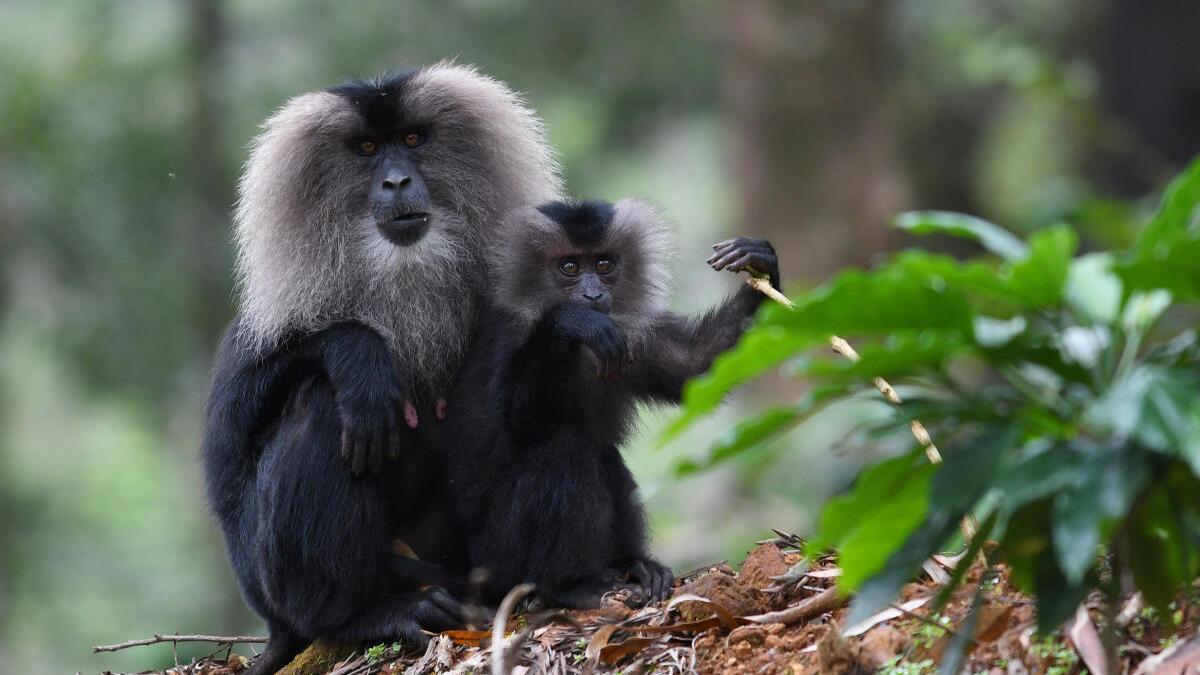Coimbatore Tamil Nadu 16/10/2024: A Lion-tailed macaque with its infant at Valparai, which stood first in terms of richness of threatened fauna in the Western Ghats. Photo: Periasamy M/ The Hindu.
| Photo Credit: PERIASAMY M
In a new study, the Bengaluru-based Centre for Wildlife Studies (CWS) has shed light on how the endangered and endemic lion-tailed macaque (Macaca silenus) selectively and strategically uses its habitat in response to increasing human pressures.
The study titled ‘Highs and lows of arboreal life: Space use and movement strategies of lion-tailed macaques (Macaca silenus) in the Western Ghats of India’ conducted in the Silent Valley National Park highlights how differences in forest management and human presence can shape animal behavior even within protected areas with similar forest structure.
Fewer than 4,000
The lion-tailed macaque is found only in the Western Ghats with fewer than 4,000 individuals remaining and the Silent Valley National Park is a stronghold for its conservation.
In the study led by Sikha Hariharan, a Doctoral Fellow at CWS, examined spatial ecology and movement-based habitat selection of two lion-tailed macaque troops living in areas with differing levels of human presence within the boundaries of the park.
The CWS scientists tracked two troops of macaques, one in the boundary or buffer zone and another in the core zone of the National Park.
They combined GPS tracking, vertical space use assessment, and advanced movement modelling to study how the macaques utilised the space around them, both high in the canopy and across the forest floor, one in the boundary or buffer zone and another in the core zone.
The CWS said that the study troop living in the buffer of the protected area maintained a smaller home range and spent nearly all the time (94.2%) in the mid-level forest canopy.
“Their avoidance of the lowest forest strata suggests a strategic response to ecological factors and increased risks from humans, predators, or other disturbance. In contrast, the interior troops showed greater use of the forest floor with large parties descending to the ground and occupied a much larger home range,” the CWS said.
Ecological flexibility
It added that while both troops spent the majority of their time mid-canopy, the more terrestrial behavior of the core-area, interior forest troop highlights a level of ecological flexibility not previously attributed to this species, which has long been considered strictly arboreal. The macaques also demonstrated consistent patterns in their use of space near key resources such as fruiting trees and dense canopy patches.
Ms. Hariharan said that an animal’s movement reflects how it perceives its environment and balances food, safety, and survival, and is usually the first visible indicator of any response to changes around them.
Understanding risk
“While terrestriality or usage of the ground was only attributed to macaque populations in degraded habitats, our study found that even in the absence of disturbances, the macaques routinely explore and use the forest floor. However, these also have their risks in terms of exposure to threats, so it is essential to prioritize continuous canopy connectivity, and even more critical to incorporate three-dimensional space use in wildlife conservation planning,” Ms. Hariharan said.
Published – May 05, 2025 09:00 pm IST
